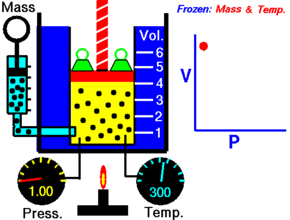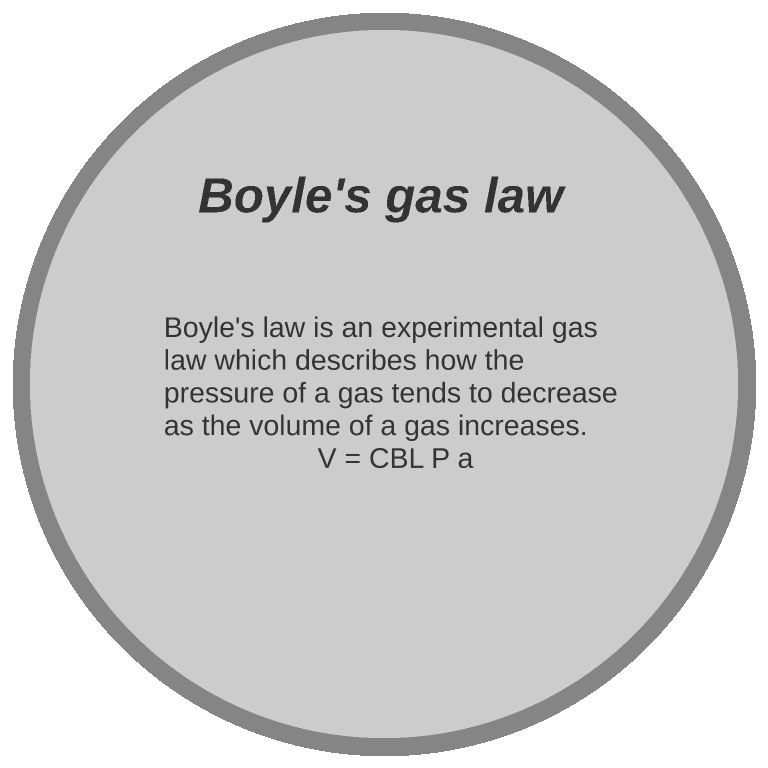Weird to think of an expert as something you are or you’re not, rather than being a quality most have to some degree or other in some areas.
Well, that is the difference between an expert and someone who does not even know what he does not know. The expert distinguishes what is certain from what is tentative. If you really think that Boyle’s law precludes gravitational collapse, then you have not done your homework and no one needs to take you seriously when you critique the work of highly regarded astrophysicists. What you should be searching on is the Jeans Instability.
Do you have any actual experts with actual names? Who?
Boyle’s law is generally combined with Charles’s law into the ideal gas equation, and this is based on both statistical mechanical theory and experimental observation. And guess what. Not a single gas known to man precisely obeys the ideal gas law - both Boyle’s law and Charles’s law are approximations. To more accurately describe the behavior of any gas requires real gas corrections. The point is that Boyle’s law is not fundamental as your pleading would suggest; the basis is statistical mechanics.
Neither the top down or bottom up theory bypasses any basic laws. Whether or not you agree does not matter, do you have a mathematically supported alternative?
That is precisely how not to read a scientific paper. Saying that the word “could” occurs 48 times in a 400 page PDF – that is, less than once every eight pages – is just vacuous rhetoric that tells us diddly squat. It is simply another case of YECs taking tiny uncertainties in science and blowing them way out of proportion.
Context is important. The fact of the matter is that all these cases of “could” and “possibly” still operate within well established constraints. And a six thousand year age for the Earth is far, far into the region described as “could not possibly.”
Something different, thank you.
The Jeans Collapse Criterion
We believe that stars form when a portion of a molecular cloud collapses gravitationally. Since we have seen that this collapse is resisted by various things, and since we see evidence for many molecular clouds that have not collapsed, it is clear that the collapse initiating star formation occurs only under some circumstances. Can we find a simple condition that tells us when a cloud becomes unstable to collapse?
The Jeans Mass
This question was answered in a very simple model by James Jeans, who showed that for a cloud of a given radius and temperature, there is a critical mass that is now called the Jeans mass . If it is exceeded, the cloud becomes unstable to collapse. The Jeans mass depends on the radius of the cloud, its temperature, and the average mass of the particles in the cloud, as shown in the box.
The Jeans Mass
The Jeans mass is determined by asking when the magnitude of the gravitational potential energy exceeds the magnitude of the gas kinetic energy. It is given by
M J = 3 kTR / 2 Gm
where k is the Boltzmann constant, T the temperature, R the radius of the cloud, G the gravitational constant, and m the average mass of a gas particle. If the cloud’s mass exceeds this value, gravity can overcome the gas kinetic energy and initiate collapse. The corresponding Jeans density is
D J = constant x ( T 3 / m 3 M 2)
where constant = 81 k 3 / 32π G 3 and M is the mass of the cloud. If the cloud is compressed so that its density exceeds this value, it can begin to collapse.
Note the last sentence. Now, how do you bypass Boyle’s law in order to compress a cloud of gases in space? To get that kind of density, you would need a nova or four in close proximity to compress enough gas to become a new star.
If it just takes pressure and gravity to create a star, then why haven’t we created any by accident when we bottle hydrogen? ( liquid hydrogen has a density of close to 71 kg/m 3)
You left out a very big
M
T is not lowercase, either, nor is R minute. And Boyle’s law refers to a closed volume.
My understanding is that things work much differently in a nebula than a gas bottle. Gas laws describe (imperfectly) ideal gases with the only forces being the movement and short distance molecular movements, but in a large cloud of cold gas, those forces fall of rapidly, but the long distance force of gravity becomes significant, making the comparison with a bottle of gas inaccurate.
For the cases, talk to the place I copied that. And it doesn’t answer the first question. And another, where do you get mass enough for a star in space?
Did you know you can change an equation to solve for any of the different variables?
I hate to disagree here, but gravity is far too weak for anything of the kind. Even magnetism is a stronger force or we couldn’t run maglev trains.
If the current theory of evolution was not true, and instead all these changes occurred through adaptations really fast, thst would be problematic for creationism as well because they would fail to show how it works quickly within our life time. We would see more speciation. But we don’t.
Why would you expect that? Speciation only occurs in the wild when needed for an animal to cope with new conditions. DNA and selective breeding tend to cut out variations otherwise. Besides, why do we need 50 more species of potatoes or 30 more breeds of dogs that can’t survive without our help?
Why do I believe that? Because it’s the truth. Just plain and simple. It’s not the truth because I want it to be. It’s not the truth because of fake science. It’s not the truth because the devils tricking us. It’s simply what all, not some or most, but all scientific evidence points towards. There is nothing to contradict it.
It’s like how to I know the earth is round? Because it is. Because there is no evidence to say it’s flat, triangular, or square shaped. It’s round. Does not matter that the Bible says it’s flat and supported by pillars and protected by dome.
YECs don’t understand that they believe in evolution, and extremely rapid evolution, at that, to get to the enormous quantity of speciation that now exists since their presumed global flood.

Actually, gas laws apply in any defined geometry; a container is not necessary. For example, it is applicable to the air you breath during a nice walk outside. It is just that P is defined by barometric pressure.
Of course, P decreases with altitude. But it is the same in a sealed vessel. P will measure greater at the base of that vessel than at the top.
OK, where do we even begin? The stellar equations of state result in temperatures required for fusion.
There is about three times the mass of stars to be found in molecular clouds.
Your agreement is not required. Gravity holds the gaseous sphere of the Sun together. Once a molecular cloud is perturbed and begins to collapse under gravity, it will surely continue like a runaway train.
Off the top of my head, radiative and evaporative cooling, light pressure from other young stars, shock wave from supernova, and galactic collision. We live in a nice cosmic suburb, but the universe is a rough place - quiescence is the exception, not the norm. When Andromeda hits, there will be massive star formation.
Because a bottle of hydrogen and an interstellar cloud of hydrogen are completely different sizes.
On the scale of a bottle in a laboratory (a few centimetres), the effects of gravity are negligible. On the scale of an interstellar gas cloud (several light years), the effects of gravity predominate.
Well yes, you can solve an equation for different varables, but you can’t solve an equation to get any answer that you want. You can only solve an equation to give an answer that is consistent with the measurements.
Exactly. If the flood is what caused the majority of the fossils, and the majority of species we have now are not found in the fossil records then it would mean that since the flood the majority of these current creatures all had to develop.
The one grain of truth in this is that the electrostatic/motive forces (magnetism) are indeed far stronger than gravity. What your source should have gone on to note, however, is that these much stronger forces are also largely canceled out. Whereas gravity has no “canceling force” to impose any equilibrium conditions on it. I.e. North poles have south poles. Positive charges are obliged to exist alongside negative. But gravity has no “antigravity” (speculations aside about ‘dark energy’ operating over cosmic scales). So yes - as “weak” as gravity is, it nonetheless runs unopposed so that when planetary-size portions of matter begin to coalesce … the ‘runaway train’ effect becomes a real thing.
One of us is imagining something. Coalescing. In space. It can’t be done. Every star, galaxy and nebula is moving apart at something near light speed. The further back in time you go, the worse the problem, as there were no heavy elements. How do H and He clump in space going nearly light speed in all directions. It’s not like there was matter in front to turn the atoms into each other.
Long before you have enough mass for even a small amount of gravity, you raise the temperature and the gas becomes more active and moves apart. And try forcing small frozen rocks to stick together at high speeds. It’s not like a mudball gaining matter. Any collision is more likely to chip off material and move the objects apart.
Sorry, but look at the pressure and density inside a nebula. Lower than a raincloud, of course. Much lower. And Boyle’s law still applies. Raise the temperature and the pressure drives the gases apart, not together. Raise the pressure and you raise the energy of the atoms, and gravity isn’t enough to hold a gas cloud together. Long before you can get temperatures near fusion, you would have no cloud left.
The physics still applies without being enclosed.
